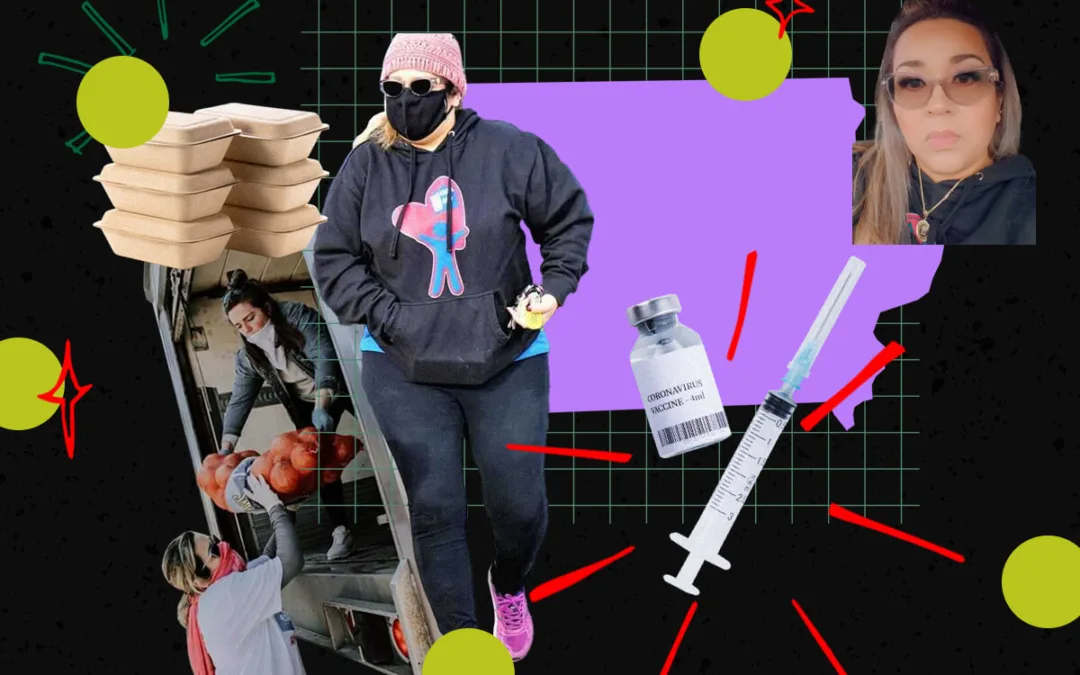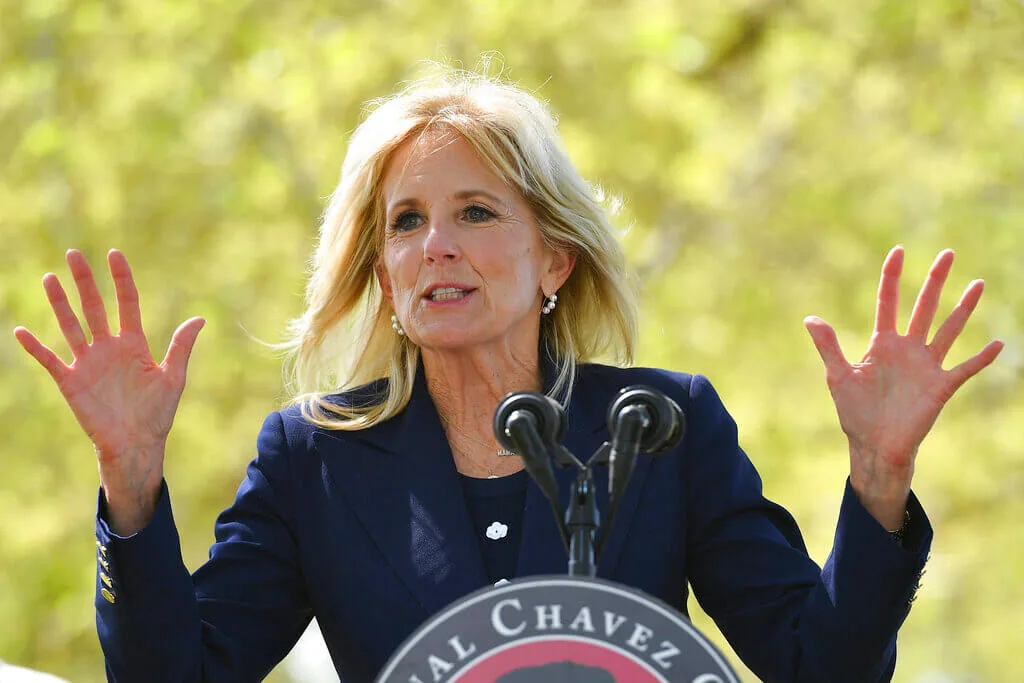
“My dog is about to be the most fit chihuahua in existence on account of how many walks we are taking.”
As the coronavirus pandemic has worsened, you’ve probably heard a lot about the term “social distancing.” Social distancing is the act of avoiding close contact with other individuals—especially crowds and large gatherings, such as weddings, concerts, and public transit.
The purpose of social distancing is to slow the spread of the novel coronavirus, an incredibly contagious disease that is sickening more and more people every day, with each infected person infecting an average of 2.5 other people. At that rate, the American healthcare system will be completely overwhelmed in a matter of weeks. In order to prevent doctors from having to ration care and choose who lives and dies, experts say we must collectively “flatten the curve,” or delay and reduce the peak of the outbreak. Doing so could save hundreds of thousands, maybe even millions of lives.
Still, it’s difficult to imagine what social distancing looks like in practice. Are ordinary people really just staying at home all the time in 2020? Moreover, how are women—who (in the U.S. anyway) already shoulder the bulk of household chores—handling all of this?
To get a better sense of how social distancing is being implemented, we spoke to six people who are currently in self-imposed isolation to see how it’s affected their lives.
Allie Orlando, 27
Orlando, who lives 30 miles south of Boston, is the director of career services at a homelessness nonprofit. For the last two weeks, she hasn’t ventured out of the suburbs except to go to work a few times last week, pick up groceries, and walk her dog.
For her, practicing social distancing is about protecting people like her grandparents, her father, who is a heart transplant recipient, and her clients at work. “They may not recover from COVID-19,” she said. “It’s so important that we think about other people and slow the spread of this virus in order to ‘flatten the curve.’”
She admits, though, that being isolated has been tough. “I am such an extrovert and thrive off of being around people. I love being in the city, walking with crowds, and feeling that energy. I do feel a possible episode of depression coming on, but I am trying to be proactive, including meeting with my therapist through telehealth, which will be a new and interesting experience.”
Orlando also said that she’s working on structuring her work from home in a way that will keep her preoccupied throughout the day. “I have also been doing a lot of spring cleaning,” she added. And, she said, “my dog is about to be the most fit chihuahua in existence on account of how many walks we are taking.”
Charity Peaver, 35
Peaver, an IT project manager who lives in Charlotte, North Carolina, has been working from home since Monday. Her husband and father, however are not so lucky, she said: Her husband works in the restaurant industry, and her father manufactures IVs for hospitals.
For food and other necessities, Peaver has taken advantage of online shopping, including Instacart, Harris Teeter online shopping, and Prime Now. “We had subscribed to Amazon for paper towels and toilet tissue and cleaning supplies,” she said. “Because of this, we had built up a reserve of most items before the panic buying. I discovered online grocery shopping about a year ago and it quickly became our preferred way to shop. So it wasn’t a huge change for us.”
Peaver also expressed some concern that not enough people were taking the recommendation to practice social distancing seriously. “I was really angry watching people out for St. Patrick’s Day on the news,” she said. “If they shut it down in Ireland, that should tell us something!”

Lyanne Santana, 27
Santana is an American English language teacher living abroad in Paris, France. She’s been practicing social distancing for just over a week now. On Tuesday, the country issued a mandate for all residents to stay at home except for necessary movement, such as grocery shopping or going to and from work. That mandate, Santana said, has been “enforced by an increased military presence.” Thus far, she has only ventured out to go to the pharmacy, get food, and to exercise.
“I will venture out as needed, but I should be good to go for about two weeks,” she said. “I am planning my meals to reduce food waste and to ensure my nutritional needs are being met to keep my immune system strong.”
Santana said she loves being at home, and has no problem being alone. “It has been strange to feel more anxious and not have the relief of being able to go outside for a mind-clearing run. If I want to do that, I will have to be prepared to hand over a document. I can’t imagine myself handing over a sweaty handwritten attestation from my pocket to justify an action that has become second nature.”
“I’m not worried about keeping busy. I can keep in touch with loved ones, tend to my space, practice yoga, and work on some job applications. Keeping busy is the least of my concerns during this uncertain time. While I’m worried about the future, taking care of myself and those in my life are the most grounding actions I can take.”
Sandra Guynes, 43
Guynes is a San Diego-based registered nurse married with a 4-year-old daughter. “We have been social distancing since Saturday, March 14th,” she said. “We had an unexpected trip to Mississippi and came back early due to the coronavirus. We know travel is risky, so we are self-isolating to protect ourselves and others.”
Thus far, the only time they’ve ventured out, Guynes said, was for walks around the neighborhood. “Self isolation is OK so far, but I know it will get tougher as we start to wrap our brains around how long this pandemic will keep us isolated,” she said. “We are just getting started. We have our creature comforts and try to find time to quiet the social media/news noise with playtime or hobbies.”
“Meditation,” she added, “is my peace if I feel anxious.”

Madelyn Ross, 28
Ross is a public school teacher in Santa Monica, California. She and her fiancé have been working from home together since last week. They had to set up a desk in their second bedroom for him to have a designated workspace. “Up until last weekend, he had been using the kitchen table,” Ross said.
When she first heard the recommendations for social distancing, Ross went to a few grocery stores and Target to stock up on sustainable supplies like frozen fruits and vegetables in order to limit her outings.
“Last Wednesday and Thursday, the markets were overwhelmingly crowded,” Ross said. “I could not find a shopping cart or basket at the three markets I visited. Since then, the stores have seemed less crowded. There is still an eeriness I feel in all of the stores—no one really smiles. I dropped a roll of aluminum foil and had my hands completely full and the empty-handed woman in the aisle just stared at me, as if to say, ‘I am not touching anything extra today.’”
Nevertheless, she’s committed to social distancing. Her parents live about five minutes away, but she’s limited her visits in order to protect their well-being. “I think that the idea of COVID-19 is so unfathomable to people, especially people around my age who have not lived through something like this,” Ross said. “If socially distancing can help us get COVID-19 under control, we should heed the advice.”
Mariel Isgard, 28
Isgard is a finance coordinator in Jersey City, New Jersey. She said being isolated has been tough, but she’s been doing a virtual workout every day to keep herself healthy. Talking to people via phone and social media has also helped her to maintain social interaction.
Social distancing is important to her, Isgard said, “because it affects the entire globe. We are all in this together to fight this bigger fight.”

Politics

Teamsters and UPS Reach Tentative Deal to Avoid Strike, 340,000 Workers to Get Raises
The tentative deal represents a huge win for full- and part-time UPS Teamster workers, who would get significant pay raises and better working...



One Republican Senator Is Blocking 265 Military Promotions, Leaving the Marines Without a Confirmed Leader
Sen. Tommy Tuberville's decision means these military officers are not getting the pay raises they’re owed, cannot move their families to wherever...
Local News



Teamsters and UPS Reach Tentative Deal to Avoid Strike, 340,000 Workers to Get Raises
The tentative deal represents a huge win for full- and part-time UPS Teamster workers, who would get significant pay raises and better working...



One Republican Senator Is Blocking 265 Military Promotions, Leaving the Marines Without a Confirmed Leader
Sen. Tommy Tuberville's decision means these military officers are not getting the pay raises they’re owed, cannot move their families to wherever...




